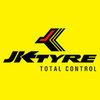Filter interviews by
Toyoda Gosei Minda Quality Engineer Interview Questions and Answers for Experienced
Toyoda Gosei Minda Quality Engineer Interview Experiences for Experienced
1 interview found
I applied via Company Website and was interviewed in Dec 2023. There was 1 interview round.
(3 Questions)
- Q1. 7 qc tools ,4m change, skill Matrix,5s ,poka yoka
- Q2. Documents work mail ,skin ,
- Q3. 4m change, skill Matrix
Top trending discussions






Interview questions from similar companies

I applied via Referral and was interviewed in Oct 2022. There were 3 interview rounds.

Say her qualification details then I have read
(2 Questions)
- Q1. Previous work experience
- Q2. What's your salary expectations
- Ans. I say salary expectations they I want
Interview Preparation Tips

I applied via Naukri.com and was interviewed before Oct 2021. There were 3 interview rounds.

(2 Questions)
- Q1. Tell me about ur self.
- Q2. Why u want to change.
- Ans.
Looking for better growth opportunities and challenges.
Seeking a more challenging role to enhance my skills and knowledge.
Looking for a company with a better work culture and growth prospects.
Want to explore new technologies and gain diverse experience.
Current job does not align with my long-term career goals.
Want to work in a more collaborative and dynamic environment.
(4 Questions)
- Q1. From Resume and Job applied for.
- Q2. Production releted doc.
- Q3. Cycle Time , Takt Time , 6M, 5'S, Kaizen, Productivity calculation, OEE calculation
- Q4. Manpower planning and line Balancing
Interview Preparation Tips

I applied via Referral and was interviewed in Jun 2020. There were 4 interview rounds.
Interview Questionnaire
2 Questions
- Q1. Questions related to previous work experience in injection molding (quality )
- Q2. Question on documents required for IATF & ALSO on process quality , inspection quality , layout inspection etc.
Interview Preparation Tips


(1 Question)
- Q1. What is your qualification
(1 Question)
- Q1. What is your name

I applied via LinkedIn and was interviewed in Apr 2024. There were 2 interview rounds.
Good and some communication questions were asked
It was very good and asking dsa answers
Interview Preparation Tips

I applied via Recruitment Consultant and was interviewed before Jan 2021. There was 1 interview round.
Interview Questionnaire
3 Questions
- Q1. How many level in ppap
- Ans.
There are 5 levels in PPAP (Production Part Approval Process).
PPAP has 5 levels: Level 1, Level 2, Level 3, Level 4, and Level 5.
Each level represents a different stage of the PPAP process.
Level 1 includes documentation submission, while Level 5 involves customer approval.
The higher the level, the more comprehensive the PPAP requirements become.
PPAP is used to ensure that suppliers meet the quality standards of their c
- Q2. Difference between cp and cpk
- Ans.
Cp measures the capability of a process to meet specifications, while Cpk measures the capability of a process to meet specifications considering centering.
Cp is a short-term capability index, while Cpk is a long-term capability index.
Cp considers only the spread of the process, while Cpk considers both the spread and the centering of the process.
Cp is calculated using the formula Cp = (USL - LSL) / (6 * standard devia...
- Q3. What is capa
- Ans.
CAPA stands for Corrective and Preventive Action. It is a systematic approach to identify, investigate, and resolve quality issues.
CAPA is a key component of quality management systems.
It involves identifying the root cause of a problem, implementing corrective actions to address the immediate issue, and preventive actions to prevent recurrence.
CAPA processes typically include steps like problem identification, investi...
Interview Preparation Tips

Interview Questionnaire
2 Questions
- Q1. How make resume how to mantion necessary information. And how to introduce myself.
- Q2. What point mation resume to make perfect resume

I appeared for an interview in Jan 2025.
(3 Questions)
- Q1. What is 5 core tool , 7 qc tool , 8 D , why why analysis
- Ans.
Core tools and techniques used in quality engineering include 5 core tools, 7 QC tools, 8D methodology, and the Why-Why analysis.
5 Core Tools: APQP, PPAP, FMEA, MSA, SPC
7 QC Tools: Check sheets, Pareto charts, Cause-and-effect diagrams, Histograms, Scatter diagrams, Control charts, Flowcharts
8D Methodology: Eight disciplines problem solving approach used to identify, correct, and prevent recurring problems
Why-Why Analy...
- Q2. What is the role of company in DWM
- Ans.
The role of a company in Design for Manufacturability (DWM) is to ensure that products are designed in a way that makes them easy and cost-effective to manufacture.
Ensuring that product designs are optimized for efficient manufacturing processes
Collaborating with design and manufacturing teams to identify and address potential manufacturing challenges early in the design phase
Implementing design guidelines and best pra...
- Q3. What is MSA and SPC explain
- Ans.
MSA stands for Measurement System Analysis and SPC stands for Statistical Process Control.
MSA is a method used to assess the measurement system variation to ensure data accuracy.
SPC is a method used to monitor and control a process through statistical analysis.
MSA includes Gage R&R studies to evaluate the measurement system's repeatability and reproducibility.
SPC involves using control charts to detect any variatio...
(2 Questions)
- Q1. What is process quality
- Ans.
Process quality refers to the level of consistency, accuracy, and effectiveness in the execution of a particular process.
Process quality is about ensuring that a specific process consistently meets the desired standards and requirements.
It involves identifying and eliminating defects, errors, and variations in the process to improve overall quality.
Process quality can be measured using metrics such as defect rates, cyc...
- Q2. 8D explain.
- Ans.
8D is a problem-solving methodology used in quality management to identify, correct, and prevent recurring problems.
8D stands for 8 disciplines, each representing a step in the problem-solving process
Steps include defining the problem, forming a team, identifying root causes, implementing corrective actions, and preventing recurrence
Example: A manufacturing company uses 8D to address a recurring defect in their product
Interview Preparation Tips

I applied via LinkedIn and was interviewed in Jun 2024. There was 1 interview round.
(2 Questions)
- Q1. Tell me your self
- Ans.
I am a dedicated Quality Engineer with a strong background in quality control and process improvement.
Experienced in implementing quality control procedures
Skilled in root cause analysis and problem-solving
Proficient in statistical analysis tools like Minitab
Certified in Six Sigma and Lean methodologies
- Q2. Strength & weakness
Toyoda Gosei Minda Interview FAQs
Tell us how to improve this page.
Toyoda Gosei Minda Interviews By Designations
- Toyoda Gosei Minda Production Engineer Interview Questions
- Toyoda Gosei Minda Engineer Interview Questions
- Toyoda Gosei Minda Junior Engineer Interview Questions
- Toyoda Gosei Minda Junior Quality Engineer Interview Questions
- Toyoda Gosei Minda Senior Engineer Interview Questions
- Toyoda Gosei Minda Assistant Manager Interview Questions
- Toyoda Gosei Minda Graduate Apprentice Trainee Interview Questions
- Toyoda Gosei Minda Quality Engineer Interview Questions
- Show more
Interview Questions for Popular Designations
- Quality Inspector Interview Questions
- Senior Quality Engineer Interview Questions
- Quality Controller Interview Questions
- Quality Assurance Interview Questions
- Quality Manager Interview Questions
- Quality Executive Interview Questions
- Quality Assurance Officer Interview Questions
- Quality Assurance Quality Control Engineer Interview Questions
- Show more
Toyoda Gosei Minda Quality Engineer Interview Process for Experienced
based on 1 interview
Interview experience
Quality Engineer Interview Questions from Similar Companies
Toyoda Gosei Minda Quality Engineer Reviews and Ratings
based on 11 reviews
Rating in categories
|
Engineer
95
salaries
| ₹2.6 L/yr - ₹8 L/yr |
|
Senior Engineer
92
salaries
| ₹3 L/yr - ₹8.5 L/yr |
|
Assistant Manager
49
salaries
| ₹4.5 L/yr - ₹11.4 L/yr |
|
Production Engineer
46
salaries
| ₹2.8 L/yr - ₹6 L/yr |
|
Supervisor
42
salaries
| ₹1.8 L/yr - ₹5.5 L/yr |

Yazaki

JK Tyres

Faurecia

Knorr-Bremse
- Home >
- Interviews >
- Toyoda Gosei Minda Interview Questions >
- Toyoda Gosei Minda Quality Engineer Interview Questions for Experienced












